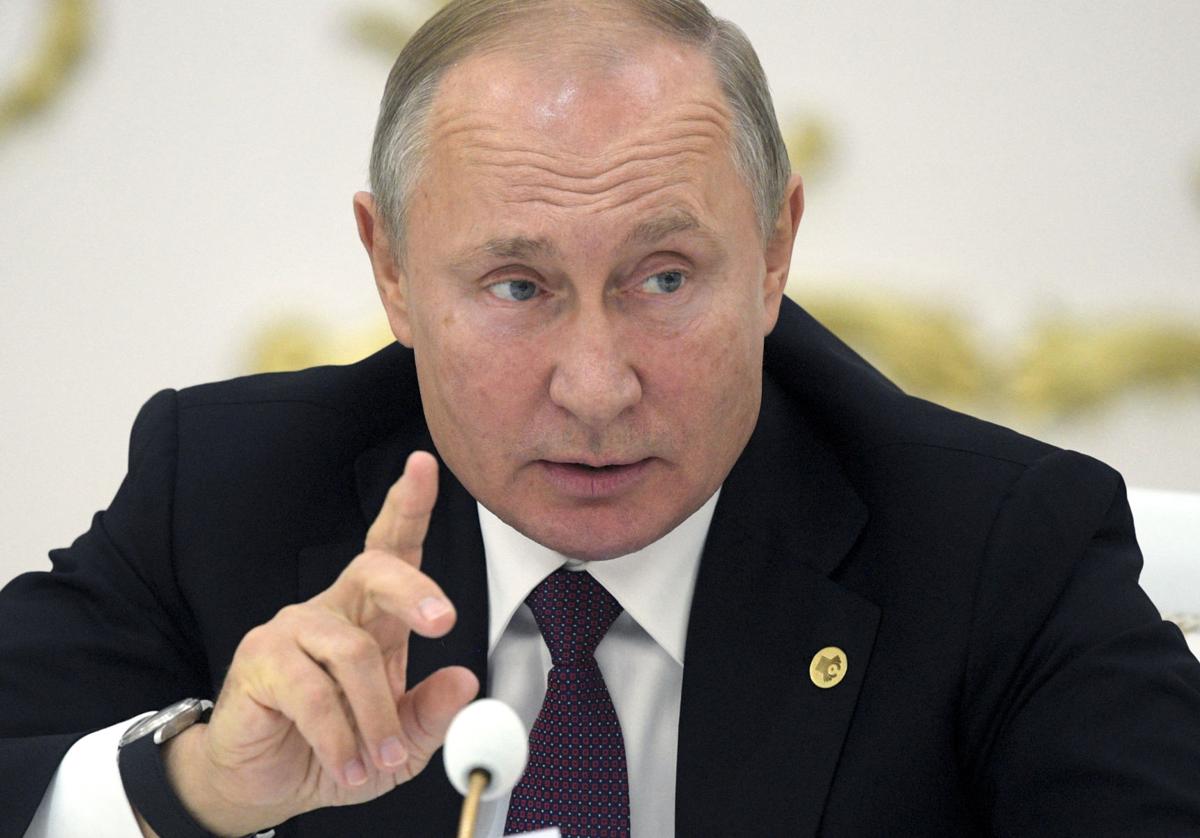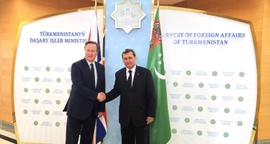As trade disputes continue between Washington and Beijing, the Caspian region’s largest and wealthiest economy is looking to forge closer economic ties with other countries within the Commonwealth of Independent States (CIS) bloc, comprised of former Soviet republics.
Speaking on the sidelines of the CIS summit that kicked off Friday in Turkmenistan’s capital city of Ashgabat, Russian President Vladimir Putin mentioned the idea of creating a single financial market among the CIS countries.
“We must protect ourselves against foreign exchange risks, we need to develop cooperation in the foreign exchange sector and coordinate currency policy,” EurAsia Daily quoted Putin as saying, addressing the heads of the CIS countries. “If we approach this once, then we can talk about the formation of a common financial market. I’m sure it will definitely benefit the improvement of our overall competitiveness.”
Putin’s words come at a time of escalating tension between the world’s two largest economies, namely the United States and China, as the Trump administration continues to impose tariffs on an increasing number of Chinese goods – a measure U.S. President Donald Trump considers fair, as American businesses and workers get scuttled in favor of cheaper Chinese imports.
Using national currencies, rather than the U.S. dollar, have become a long-term priority for Russia, which has been hit repeatedly with sanctions by the United States and the European Union since 2014, following the crisis in Ukraine and the alleged poisoning of a former Russian spy, Sergei Skripal, and his daughter.
Using national currencies in international trade is something already underway with some transactions between Russia and CIS countries, as well as amongst members of the Eurasian Economic Union. Russia also has currency swap agreements with countries under U.S. sanctions and other trade restrictions, such as China and Iran.
In an attempt to lower their dependency on the United States dollar, last week officials from Moscow and Ankara signed an agreement to use Russian rubles and Turkish lira.
Founded in 1991 upon the dissolution of the Soviet Union, CIS is an organization that unites the majority of the former Soviet Union republics, including most countries in the Caspian region. The organization has by now nine members and an associate member, namely Turkmenistan, with a combined gross domestic product (GDP) of about $2 trillion.
To revive economic ties between countries that had once been part of the same union, most of the CIS members have created a free trade zone that has addressed a number of issues in trade relations between the member-states.







 President Ilham Aliyev shed light on the evolving contours of the peace process with Armenia during an international conference in Baku this week. ...
President Ilham Aliyev shed light on the evolving contours of the peace process with Armenia during an international conference in Baku this week. ...
 Azerbaijan and Armenia started the process of demarcation of their border on Tuesday, with the installation of the first border markers based on ge...
Azerbaijan and Armenia started the process of demarcation of their border on Tuesday, with the installation of the first border markers based on ge...
 President Aliyev emphasized the critical role of the North-South Transport Corridor in fostering transport cooperation between Azerbaijan and Russi...
President Aliyev emphasized the critical role of the North-South Transport Corridor in fostering transport cooperation between Azerbaijan and Russi...
 Iran and Pakistan have signed eight cooperation documents in various fields, and agreed to strengthen ties to fight terrorism in the region.
Iran and Pakistan have signed eight cooperation documents in various fields, and agreed to strengthen ties to fight terrorism in the region.
 As the conflict between Ukraine and Russia escalates, the strategic importance of Kharkiv, Ukraine's second-largest city, has come sharply into focus.
As the conflict between Ukraine and Russia escalates, the strategic importance of Kharkiv, Ukraine's second-largest city, has come sharply into focus.
 Iranian President Ebrahim Raisi expressed Tehran’s readiness to participate in significant development projects in Sri Lanka during the inauguratio...
Iranian President Ebrahim Raisi expressed Tehran’s readiness to participate in significant development projects in Sri Lanka during the inauguratio...



